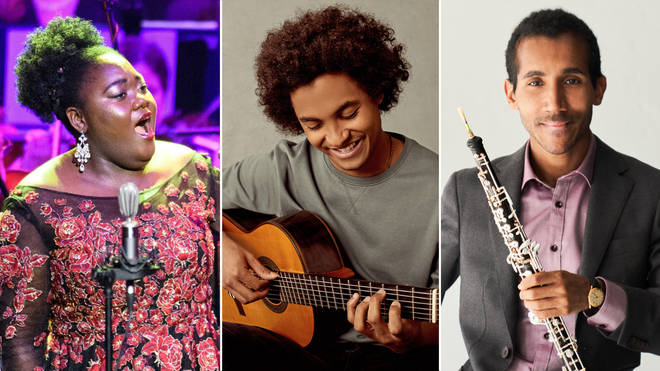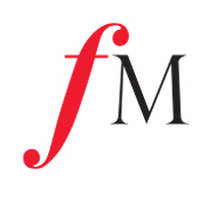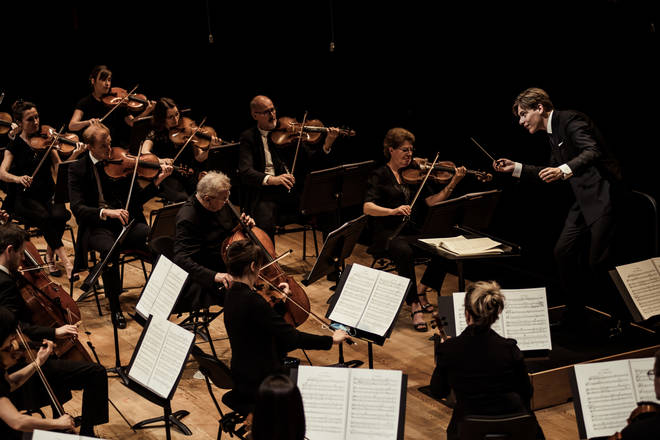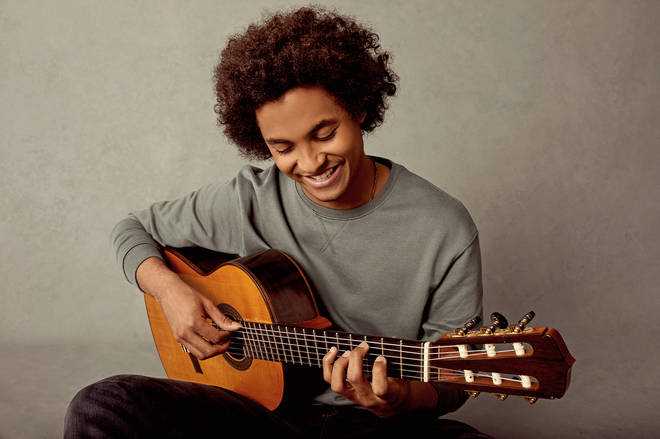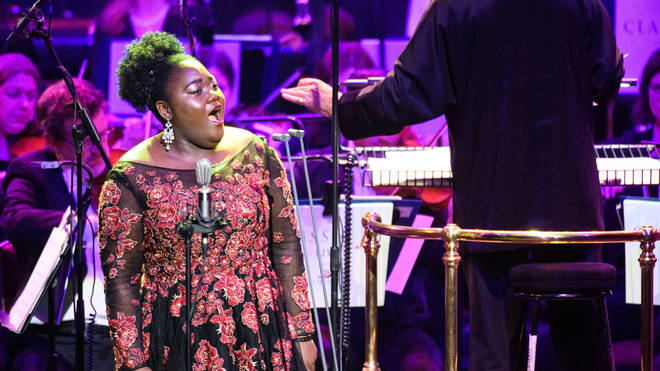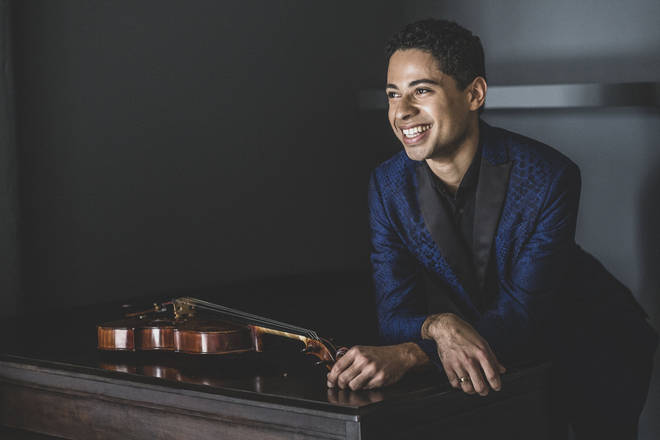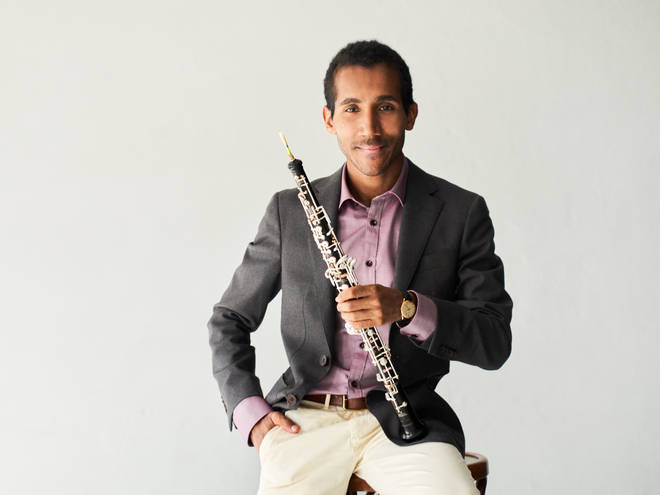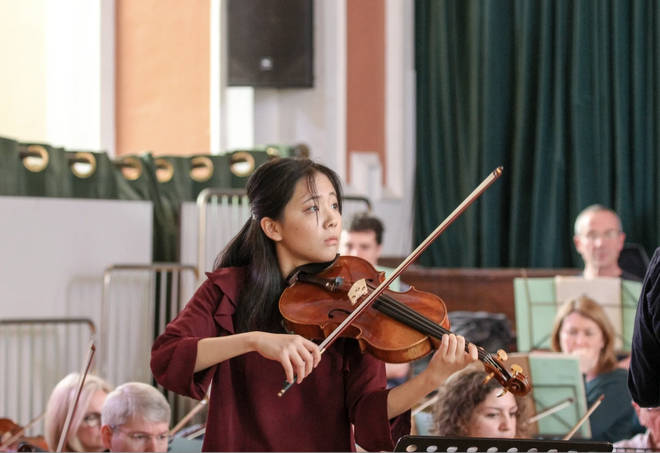It's all about the classical music composers and their works from the last 400 years and much more about music. Hier erfahren Sie alles über die klassischen Komponisten und ihre Meisterwerke der letzten vierhundert Jahre und vieles mehr über Klassische Musik.
Friday, July 22, 2022
Thursday, July 21, 2022
15 glorious pieces of classical music for summertime
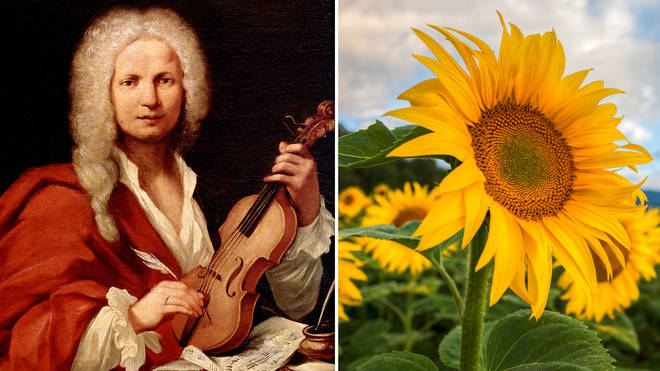
By Maddy Shaw Roberts, ClassicFM
Let these brilliant summer melodies take you on a musical journey from the fervent height of summer, to the tranquil sunset at day’s end.
Keep cool and ring in the sun-drenched months ahead with these chilled classical melodies, courtesy of Vivaldi, Albéniz, Gershwin and more.
Marquez – Conga del Fuego
This fantastically energetic work is a frantic, joyous dance – impossibly catchy in its rhythms, a new classical favourite of the last ten years or so and an immediate reminder of the euphoria of summer.
Delius – On Hearing the First Cuckoo in Spring
Based on a melody from an old Norwegian folk song ‘In Ola Valley’, this beautiful tone poem is among English composer Delius’ most beloved pieces. Listen out as instruments of the orchestra imitate the natural sounds of the cuckoo – from the strings to the woodwind.
Tereso Carreño – Mi Teresita (Little Waltz)
Here’s a delightful ditty for solo piano, written by 19th-century Venezuelan concert pianist and composer Teresa Carreño for her daughter, Teresita. At her concerts, Carreño often played this charming piece as an encore.
Gershwin – Summertime
It started as an opera aria from Porgy and Bess, and then became a reggae hit, and finally a jazz staple. Gershwin’s sultry writing with a hint of melancholy has lent itself to every genre imaginable, making ‘Summertime’ the most covered song in the world.
Respighi – The Pines of Rome
Glimmering with anticipation from the offset, this delightful orchestral tone poem opens with a musical painting of children playing in the pine groves and closes with trumpet fanfares to depict a marching band.
Beethoven – Romance No. 2 in F major
Warmth practically radiates out of this Romantic violin work – sublime, and yet somewhat sad in its innocence and sweetness, as we remember that Beethoven composed the piece while coming to terms with the tragedy of his deafness, probably for the first time.
Debussy – Prélude à l’après-midi d’un faune
This delightful symphonic poem tells the tale of the mythical faun who, enchanted by the woods’ nymphs and naiads, drifts off to sleep. Don’t be surprised if Debussy’s famous chromatic opening flute solo and shimmering harp lines send you off into your own slumber, as they emulate the languorous heat of a summer afternoon.
Rodrigo – Concierto de Aranjuez
Journey to Spain’s sweltering capital with this beautiful classical guitar concerto, filled to the brim with swelling melodies and melancholic emotion, all while bringing to life the aristocratic essence of an 18th-century court.
Mendelssohn – A Midsummer Night’s Dream
Within Shakespeare’s tranquil yet playful setting, Mendelssohn places a sweeping Intermezzo, enchanting Nocturne and a rather impish Scherzo. This music is an exquisite listen during the warmer months.
Camille Pépin – Apaisé, boisé
Rising star French composer Camille Pépin’s gently pulsating work for orchestra induces a state of dreamlike musical bliss. It practically sings of summer and new growth, as the woodwind, brass and strings each take it in turns to pierce the earth and find sunlight.
Glazunov – The Seasons
Glazunov’s ballet The Seasons creates four tableaux based on the changing seasons, and ‘Summer’ speaks to a delightfully rural scene. As water is brought to refresh the flowers, which have been basking in the warmth of the sun, the Spirit of the Corn dances in thanksgiving. Is that the picture of summer, or what?
William Grant Still – Summerland
A gentler choice now, this heavenly work by William Grant Still – the first African American composer to conduct a major US symphony orchestra – is the second movement in a three-part solo piano suite, which tells the story of a human soul’s journey after death. If the life has been a good one, the soul may enter ‘Summerland’.
Richter – On the Nature of Daylight
Modern composer Max Richter’s deeply beautiful, reflective ‘On the Nature of Daylight’ has lent perfectly to cinematic use. A calming, contemplative work for gentle reflection, as the sun sets on the day.
Listen here to Classical Summertime, our live playlist on Global Player.
Dolphins behave better after listening to Bach and Beethoven, study finds
By Sophia Alexandra Hall, ClassicFM
@sophiassocialsBeethoven’s ‘Almost a Fantasy’ and ‘The Swan’ by Saint-Saëns are just some of the pieces of classical music enjoyed by Italian dolphins involved in this latest scientific study.
Most scientists agree that dolphins are very intelligent creatures. The species have demonstrated in multiple studies that they are quick learners, empathetic, self-aware, and great at problem solving.
But a recent study published in the journal Applied Animal Behaviour Science has now proved that dolphins are also music lovers, and that classical music specifically could improve social behaviours of the aquatic animals.
Researchers at the University of Padua in Italy found that playing classical music resulted in the dolphins showing more interest in each other, giving more gentle touches and swimming in synchrony for longer.
Eight dolphins in the eastern beach-front city of Riccione, Italy, were played 20 minutes of classical music a day via an underwater speaker for seven sessions. The aquatic mammals heard a number of pieces of classical music including Bach’s Prelude BWV 846, Grieg’s ‘Morning Mood’ from Peer Gynt, Debussy’s Reflets dans l’eau, Beethoven’s Almost a Fantasy, and ‘The Swan’ from The Carnival of the Animals by Saint-Saëns.

On other days, the dolphins were played the sound of rainfall for 20 minutes (auditory stimulus), given floating toys to play with for 20 minutes (an already known form of enrichment for the animals), or shown natural environments on television screens for 20 minutes (visual stimulus).
The group of dolphins was made up of five female and three male dolphins between the ages of five and 49 years old. Three of these dolphins, which are housed at a dolphinarium in Riccione, were born in the wild.
The researchers found that only the music had a long-lasting positive effect on the dolphins’ behaviour. As only classical music was used, the researchers admitted the results may not be specific to just the classical genre, but that classical music could be particularly useful when improving social behaviours in dolphins.
The use of music was also a particularly useful tool for when the animals were under stress or in situations that could lead to increased conflicts.
Lead researcher Dr Cécile Guérineau said the way the dolphins acted, suggested they were showing happiness.
“This system is linked to reward, social motivation, pleasure and pain perception,” explained Dr Guérineau. “Activation of opioids receptors is correlated with a feeling of euphoria. [And] we know that in a wide range of animals – from mammals, monkeys, dogs, rats etc, to non-mammals, birds – endorphins, i.e. one type of endogenous opioids, are related to social bonding.
“Dolphins may also be able to perceive rhythm because they are a vocal-learning species. It may be that, similar to how dancing at a party makes us feel good and helps people to bond, when dolphins synchronize to a beat, they also feel good and connect with their fellow swimmers.”
GIRL FROM IPANEMA
Cole Porter song EVERYTIME WE SAY GOODBYE and his life and music
Wednesday, July 20, 2022
"Somewhere In Time" - Complete Soundtrack
John Dunbar Theme - Dances with Wolves
Out Of Africa | Soundtrack Suite (John Barry)
Monday, July 18, 2022
Make Friends With the Music
by Frances Wilson , Interlude
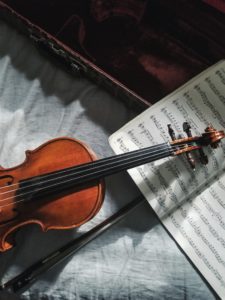
© Jordan Mixson on Unsplash
Too often it seems that we view learning, studying, practising and performing music as a kind of fight. People talk about “doing battle with Beethoven” or “fighting the fear” (of performing) as if one must take up arms against unseen, powerful forces.
Beethoven: Violin Concerto in D Major, Op. 61 – III. Rondo: Allegro
It’s true that learning new repertoire can be a Herculean task, and practising can feel like a form of captivity, the same page of music confronting one day after day, coupled with the sense that one has hardly moved forward from the previous day’s practising. It is also true that in order to learn any repertoire properly, and deeply, we must spend inordinate amounts of time sweating the small stuff – all the details in the score, the directions and signposts the composer gives us to navigate the keyboard and produce a coherent path of sound to take the listener on a unique journey into the composer’s own inner landscape, while also to enabling us to make our own interpretative choices about how we will perform the music.
There is no alternative to the hard graft of learning new work in depth: working, with pencil and score, cutting through the music to the heart of what it is about. Living with the piece to find out what makes it special, studying style, the contextual background which provides invaluable insights into the way it should be interpreted and performed. The endless striving to find the emotional or spiritual meaning of a work, its subtleties and balance of structure, and how to communicate all of this to an audience as if telling the story for the very first time.
Studying, practising performing and ultimately sharing music, the musician’s “work”, should not feel like a battle or a mountain summit that must be conquered. I know many musicians, professional and amateur, who have personal strategies to prevent this sense of struggle. Spending time with the score away from the instrument can be particularly helpful, familiarising the shape and architecture of the music on the page, and imagining the sound in one’s head, without the added distraction of the geography of the piano keyboard, for example. For very complex music, I like to leave the score, or copies of the score, around the house – on the dining table, by my bedside, so that I see the score regularly, often many times during the day. When I come to place it on the music desk, it already feels comfortable, even if I have yet to touch the piano’s keys.
Practising is an act of doing, creating, living with the music. It defines who we are as musicians and gives us a reason for being. A positive, open minded approach to practising can remove the feelings of toil and travail. Making friends with the music brings joy, pleasure and excitement to practising. We should live and breathe our work, beginning every practise session with the question “What can I do that’s different today?”.
This excitement and affection for our music is very palpable when we perform – audiences sense and appreciate it – and it brings the notes to life with vivid colour and imagination.
Saturday, July 16, 2022
The Prodigal Pianist
by Frances Wilson, Interlude
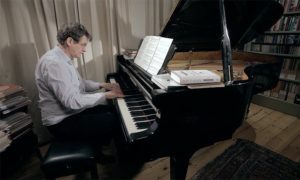
Alan Rusbridger
The adult ‘returner’ pianist
I’m a returner pianist – and maybe, if you’re reading this article, you are too and therefore what follows will resonate with you. Or perhaps you are thinking of taking up the piano again after a long absence (as I did), in which case you should definitely read on…..
I played at a piano club recently and during the coffee break someone asked me if I was “a professional pianist”. This gave me a momentary glow of pride and ego – evidently I had played well and “made an impression” – and I know that many amateurs dream of reaching the dizzy heights of ‘professional standard’ in their playing. It’s one of the things that keeps us motivated to practice; alone with that box of wood and wires we dream of playing to a full house at the Wigmore or Carnegie Hall.
So I replied that no, I was an amateur pianist, an adult ‘returner’ and that I had given up the piano at the age of nineteen when I left home to go to university, returning to it just shy of my fortieth birthday with an all-consuming passion for the instrument, those who play it and its vast and varied literature.
When you tell people you’ve taken up the piano again they always ask, “Are you any good?” And I never know quite what to say. Some days when my spirit and fingers are in sympathy with each other, I think I make a reasonable sound. On other days, spirit and fingers aren’t on speaking terms and the result is fumbling, dismal, depressing.
– Alan Rusbridger, journalist and amateur pianist
The world of the adult amateur pianist is a curious one – at once rich, vibrant and varied, but also obsessive, anxious and eccentric and when I put out a call for contributions to this article, I was deluged with responses as varied, fascinating and moving as the literature of the instrument we play. What follows are just a few of the responses, but what they demonstrate is that, while there are some obvious common threads, the reasons for returning to and playing the piano are often deeply personal and hugely meaningful, and that a passion for the piano is all-consuming. Never forget that the word “amateur” derives from the Old French word meaning “lover of” from the Latin amator: all the amateur pianists I meet and know play the piano because they love it and care passionately about it. Love drives commitment to the instrument – amateur pianists are possibly the most dedicated practicers – and many amateurs are absorbed by a compelling need to get better, to progress, to master. It’s a lonely road to travel, but those who commit to the journey do so willingly, and it’s an ongoing process, one which can provide immense satisfaction, stimulation and surprising creativity.
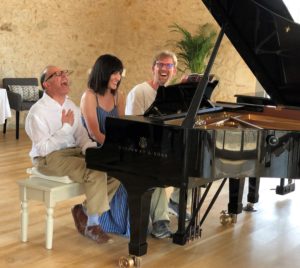
Amateur pianists at La Balie piano summer course
That is not to say that professional pianists don’t love the piano too – of course they do, otherwise they wouldn’t do it, but a number of concert pianists whom I’ve interviewed and know personally have expressed a certain frustration at the demands of the profession – producing programmes to order, the travelling, the expectations of audiences, promoters, agents etc, which can obscure the love for the piano. Because of this, professionals are often quite envious of the freedom amateur pianists have to indulge their passion, to play whatever repertoire they choose and to play purely for pleasure.
Now, back to those inspiring adult returners…..
My primary reason for returning was that both my parents had lived the last ten or twelve years of their lives with advancing dementia, as well as some second degree relatives. I thought the best way to really work my brain was to go back to playing music. The secondary reason was to help relieve stress which was something my piano teacher had told me I would need at some point in my life……For me, having started to suffer the lacunar strokes in my family history which have a type of dementia related to them, I keep hold on the fact that the part of the brain that works with music is usually the last to fail. I still feel that playing the piano is probably one of the best avenues to take to keep working the brain. Apart from that I simply love playing again.
– Eleanor
It was the death of an uncle which prompted me to return to the piano. He was very musical, and after he died my other uncle asked me whether I would like his piano, a rather fine Steinway grand which had been in the family for ages. However, grand pianos are somewhat incompatible with the three bedroom semi in which I live, but it did remind me how much I’d enjoyed the piano. I was lucky enough to be left some money in his will, and with that I bought a Yamaha upright with silent system fitted. I wanted a proper acoustic, but I have young children so a silent system means I can practice at night after they are in bed. I have lessons once a fortnight and they are completely indispensable for my enjoyment.
– Sarah
I studied music at university and did two years of a performance major but struggled with various chronic injuries and dropped out as a result (I had two operations and had seen many medical specialists in attempt to resolve these problems). I then “sold my soul” to capitalism and started a business, following which I continued along a corporate career. I had always dreamed of getting back into playing but my schedule was punishing and not at all conducive to playing. I started to play again and unfortunately ended up with RSI (tennis elbow) which swiftly ended my return to playing. Then a few years later I managed to extricate myself from the corporate world and…..I managed to start playing again and although I had some niggles from the RSI, was able to play around 0.5 – 1 hrs a few days a week. I also started going for lessons with [a teacher who] focussed very much on reducing tension…..and I realised how much of my injuries came down to poor technique and tension. I wish a greater emphasis had been placed on this when I was a music student because while [my teacher] helped me find a much more natural, comfortable way to play, it was already too late and my RSI flared up again to the point where a few minutes of playing would leave me in agony for days. It was devastating after so long of trying to be in a position to have the time to play that I wasn’t able to. A few years later (whilst consistently seeing medical specialists and trying various approaches) I managed to have a breakthrough in which I was able to slowly start playing again, a few minutes every second day and was able to gradually build up. This was a useful exercise in that I had to be more focussed on practising effectively given the limited time available. Despite being told by numerous doctors that I wouldn’t play again, I’m now able to play for up to an hour on some days. This has been sufficient to learn some new repertoire and to perform in some amateur meet-up groups which has really been a wonderful experience. In fact, once I was able to let go of the inner critic (as a former music student, the inner critic remains highly developed even though one’s technical ability wanes without practice!), I couldn’t believe how much I enjoyed playing. It would have never have occurred to me all those years ago when I dropped out of university that I’d be able to derive so much enjoyment out of playing as an amateur.
– Ryan
I originally started piano lessons aged 13, of my own volition; I’d had one of those 80s electronic keyboards that were all the rage back then, and wanted to progress to something more substantial. My progress was very slow, however, and ultimately not very fulfilling. I managed to pass my Grade 1 but found the exam experience stressful. I think a lot of it had to do with the prescriptive way children are typically taught: everything was just scales, sight reading and set pieces that weren’t especially fun or engaging to play. Nearly twenty years later, I was in a piano bar on holiday, and the pianist was playing modern music set to piano. It was beautiful, and I felt a sense of regret that I had abandoned such a beautiful instrument. On returning home, I did a spot of research and found that digital pianos had come on a long way in the intervening years and were now touch-sensitive with weighted keys and even a sustain pedal. I took the plunge, ordered a decent model (the Yamaha P115) and signed up for lessons with a local teacher. It’s been a wonderful decision, and I have fallen in love with playing. It’s still small steps, but I practice regularly and have actively witnessed improvement in my own playing.
– Colin
I discovered classical music as a teen (Bach) and started taking lessons. I wanted to be a composer, and eventually became a composition major at a local university. Having started late, and not having received family support and good advice from those who did support me, I let my insecurities defeat me, and I ended up getting a degree in English. Decades later, we inherited a spinet from a relative, and I found my passion once again. I finally have a good teacher, and am making progress toward being the pianist I wanted to be.
– Bob
My piano journey has been relatively straightforward compared to some of the accounts of other adult returner pianists, but we are all on our own personal path, some of us supported by teachers, others choosing to “go it alone”, but all driven by a common, consuming passion for the piano.
Friday, July 15, 2022
Buried Treasures: Felix Mendelssohn: Concerto for Piano, Violin and Strings in D Minor (1822)
by Georg Predota
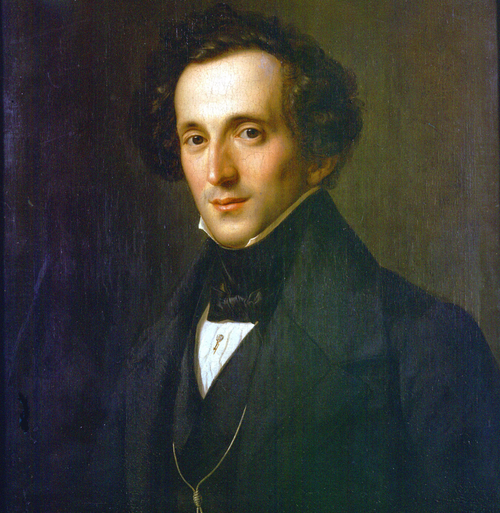
Felix Mendelssohn
When Felix Mendelssohn (1809-1847) died at the incredibly young age of thirty-eight, he simply had not yet made arrangements for literally hundreds of unpublished musical manuscripts and artworks, alongside thousands of personal letters to and from the composer. During his lifetime, and for a short period thereafter — with a large number of music published during a period of two years following his death — Mendelssohn was almost universally lauded musical genius. What is more, Mendelssohn was also the artistic director and chief conductor of The Gewandhaus (Garment House) in Leipzig, a venue that has long been recognized as one of the most important performing centers in Europe. Under his tutelage and leadership, the Gewandhaus Orchestra became a cultural institution. Mendelssohn not only initiated the revival of music by Bach, Handel, Haydn and Mozart, he also assured that his brand of musical historicism was disseminated throughout Europe and beyond. With the help of Richard Wagner who declared “Judaism the evil conscience of our modern civilization” in his 1850 treatise Judaism in Music, Mendelssohn and his music were quickly subjected to deliberate and systematic forms of historical revisions. And when Wagner declared Mendelssohn’s music “an icon of degenerate decadence,” publishers far and wide declined to make his manuscripts and letters public.
Of course, Wagner was not able to completely erase or dismiss Mendelssohn’s influence on Germanic arts, nor was he able to excise him from music-historical memory. This, of course, led to serious irritation within the propaganda machinery of Nazi Germany, and his name was promptly added to various lists of forbidden artists. At that time, according to Stephen Somary, founder and artistic director of the Mendelssohn Project, “a majority of Mendelssohn manuscripts — both published and unpublished — were housed in the basement of the Berlin State Library. They were smuggled to Warsaw and Krakow during the winter of 1936/37, and when the city fell under Nazi control in 1939, they were hurriedly smuggled out again and disbursed to locations wide and far between.” Following WWII, the majority of manuscripts remained buried behind the Iron Curtain. Haltingly, various unknown versions and unknown compositions were discovered and made available in one form or another.
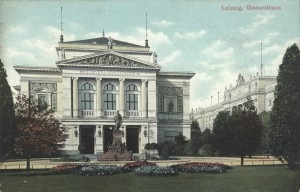
The Gewandhaus
Initially, these efforts focused on works Mendelssohn composed before his 14th birthday, pieces that had originally been presented at private concerts at the Mendelssohn home. Among them various sonatas for viola and for violin, religious choral music, numerous piano compositions and even a fourth opera. But it also included a succession of concertos, among them a concerto for piano and string orchestra in A minor (1822) and two concertos for two pianos and full orchestra in E and A-flat, originating from 1823 and 1824, respectively.
The concerto for violin, piano and string orchestra in D minor was composed for an initial private performance with his best friend and violin teacher Eduard Rietz. On 3 July 1822, Mendelssohn revised the scoring, adding timpani and winds and the premiere of this version was apparently performed on the same day. For reasons detailed above, it remained unpublished until 1960, when the Astoria Verlag in Berlin issued a miniature score, edited and arranged by Clemens Schmalstich. In 1966, Theodora Schuster-Lott and Frieder Zschoch prepared a scholarly edition for the Deutsche Verlag für Music as part of the new Mendelssohn complete edition, “which was engraved, but never published except in a reduction by Walter-Heinz Bernstein for violin and two pianos.” Finally, in 1999 the 1960 miniature score was reissued in a scholarly edition with the wind and timpani parts added. And just in case you are wondering, the A-minor Piano Concerto of 1822 had until recently been unavailable in any edition, and the Concerto for two pianos and orchestra in E major, composed as a birthday gift for his sister Fanny, had to wait until 2003 before audiences could get a listen to the original version.
The Modern Patron: Benny Goodman
by Maureen Buja, Interlude
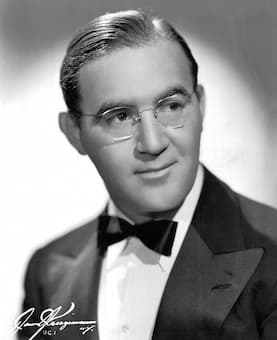
Benny Goodman, 1942
After having made his name in jazz, clarinetist Benny Goodman set out to make his name in classical music, feeling that he was likely to leave a longer impression in classical music than in jazz. To fill that need, he started commissioning works, with the net result being a body of modern music for clarinet that is unmatched.
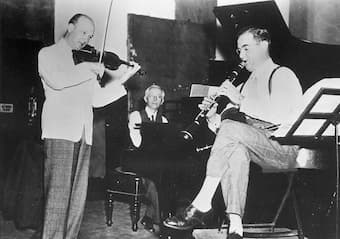
Szigeti, Bartók and Goodman in rehearsal
His first commission was undertaken to help a music who was having financial problems. In 1938, at the instigation of the violinist Jozsef Szigeti, Benny Goodman commissioned Béla Bartók for a double concerto for clarinet and violin. Bartók, Szigeti, and Goodman made their premiere at Carnegie Hall in January 1939 with a work entitled Rhapsodies for Clarinet and Violin: Verbunkos and Sebes. The trio recorded the work in 1940 after Bartók had written a new middle movement. It had a new title: Contrasts, based on Bartók’s feeling that the trio did not employ instruments that had sonorities that would easily blend. Through the work, the violin and clarinet trade fragments of melodies, with one instrument supplying a rhapsodic accompaniment to the other.
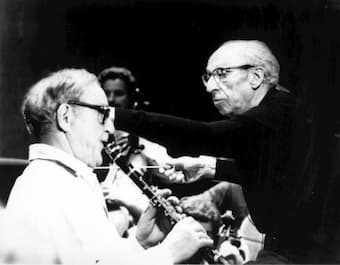
Aaron Copland conducting the Los Angeles Philharmonic,
with Benny Goodman (by David Weiss)
With that start, Goodman continued to meet composers and commission works. Sometimes it worked and sometimes it didn’t: his commission of a clarinet concerto from Benjamin Britten in 1942. Only the first movement was completed and it was filled out and orchestrated much later by Colin Matthews, being published under the title of Movements for a Clarinet Concerto only in 2008. The composer Ingolf Dahl started a double concerto for Goodman and seems to have nearly completed it, but the work has vanished. A concerto was commissioned from William Walton but nothing is known about it.
Lost works aside, the works that do survive include clarinet concertos by Milhaud (1941), Hindemith (1947), Copland (1947-48), and Malcolm Arnold (1974), a sonata for clarinet and piano by Francis Poulenc (1962), and titled works including Revue for Clarinet and Orchestra by Alex North (1946) and Derivations by Morton Gould (1955).
Prelude, Fugue, and Riffs by Leonard Bernstein (1949) had been written for the band leader Woody Herman but he was between bands at the time and Goodman played the premiere, gradually being identified with the work.
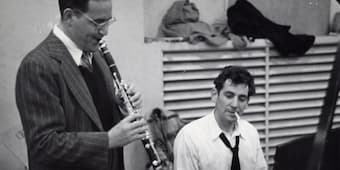
Bernstein and Goodman in rehearsal, 1951
Composers were faced with a quandary in their writing – do they do something that’s purely classical or do they consider including anything from Goodman’s jazz side in their writing? For Morton Gould in Derivations for Clarinet and Band, the jazz side pulled strongly, resulting in a final movement that, as the composer says, is ‘…meant to go like a shot. Its accumulating barrage of jazz-oriented ostinatos and motifs attempts to give the drive and feel of jazz improvisation.’
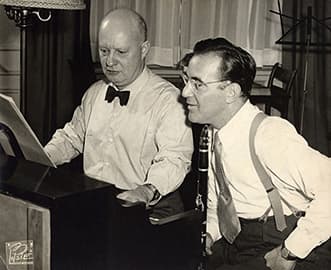
Paul Hindemith and Benny Goodman, ca. 1947
The fact that he commissioned a work did not guarantee that he would play it. He pushed Darius Milhaud for a clarinet concerto and exclusive performing rights for 3 years, but in the end never performed or recorded the work. It was given its first performance in 1946 by clarinetist Richard Joiner with the Marine Band at the Marine barracks in Washington, D.C.
Hindemith and Goodman started meeting in 1941 but because of the war, Goodman suspended all activities, including commissioning German composers until much later. It wasn’t until 1947 that the commission discussions were renewed. The first performance didn’t go well and Goodman didn’t play the work again until 1955, where critics said they would have liked the work better if Goodman had been free to improvise that than tie himself to the work. In the end, however, perception of the work has changed to recognize its value.
Of all the work that Goodman commissioned, three works stand out: Bartók’s Contrasts, Copland’s Concerto, and Hindemith’s Concerto. All are significant contributions to the clarinet literature and to the music of the 20th century.
Thursday, July 14, 2022
Classic FM’s Rising Stars: 30 brilliant musicians we’re celebrating in 2022
We’ve selected 30 outstanding young musicians for Classic FM’s Rising Stars 2022 – from cellists to clarinettists, and composers to conductors, from across the globe.
In the year that Classic FM celebrates its 30th birthday, we’ve compiled a list of 30 brilliant young musicians all under the age of 30.
The list has been compiled in collaboration with Julian Lloyd Webber, who hosted the radio series Rising Stars on Classic FM in 2021. Speaking to Classic FM, Lloyd Webber said: “It’s been incredibly exciting to work together with Classic FM on our second annual list of ‘30 under 30’ Rising Stars. These musicians are quite extraordinary and I can’t wait to share their brilliant talents with Classic FM’s listeners!”
Beginning on Monday 11 July, a recording by a different Rising Star will be played during each programme on Classic FM, beginning with Tim Lihoreau’s More Music Breakfast, and ending the following morning in Lucy Coward’s Early Breakfast show.
Read on to find out more about this year’s list of outstanding young musicians.
Bruce Liu, 25 – Canadian Pianist
25-year-old pianist Bruce Liu shot to fame in 2021 after winning the 18th International Chopin Piano Competition in Warsaw. Born in Paris and growing up in Montreal, Liu made his performing debut at the age of 11 and has gone on to sign an exclusive contract with Deutsche Grammophon, releasing a debut album in November 2021.
Klaus Mäkelä, 26 – Finnish conductor
At just 26 years of age, Klaus Mäkelä is chief conductor of the Oslo Philharmonic Orchestra, music director of the Orchestre de Paris, and artistic director of the Turku Music Festival in Finland. It was also recently announced that Mäkelä will take up a position with the Netherlands’ Concertgebouw Orchestra from next season, taking the helm as chief conductor from 2027. He is a Decca Classics artist, and in March 2022 released the complete cycle of Sibelius symphonies in an all-Finnish affair alongside the Oslo Philharmonic.
Klaus Mäkelä. Picture: Mathias Benguigui / Pasco & Co Leia Zhu, 15 – British violinist
Leia Zhu made her performance debut aged four, and has since gone on to perform with renowned musicians and orchestras the world over. From the London Symphony Orchestra with Simon Rattle to the Lucerne Festival in Switzerland, Zhu was last year appointed artist in residence with the London Mozart Players.
This is a modal window.
An unanticipated problem was encountered, check back soon and try again
Error Code: MEDIA_ERR_UNKNOWNSession ID: 2022-07-15:f85f921fc1f58dd731f41a10 Player Element ID: bc_player_6277817736001Plínio Fernandes, 27 – Brazilian guitarist
In May 2022, record label Decca Gold announced the signing of Brazilian guitarist Plínio Fernandes. He released a new album Saudade on 8 July, championing work by Brazilian composers including Heitor Villa-Lobos, and featuring collaborations with both Sheku and Braimah Kanneh-Mason.
Plínio Fernandes, guitarist. Picture: Rebecca Naen Masabane Cecilia Rangwanasha, 28 – South African soprano
Growing up in the Limpopo province of South Africa, Masabane Cecilia is currently based in Europe and South Africa. She has graced the stage of the Royal Opera House in Covent Garden under the baton of Antonio Pappano, where she was also part of the Jette Parker Young Artists Programme in the 2019/20 season. More recently, she has performed in Bern, Moscow, Stellenbosch, and at Classic FM Live in the Royal Albert Hall in April 2022.
Masabane Cecilia Rangwanasha performs with the Royal Philharmonic Orchestra at Classic FM Live. Picture: Alamy Isabelle Peters, 29 – British soprano
For the 2021/22 season, Isabelle Peters was appointed Associate Artist at the Welsh National Opera, performing in Don Giovanni, The Barber of Seville and more. She has previously appeared with the Waterperry, English National, and Garsington opera companies, and will make her debut at the Royal Opera House’s Linbury theatre in 2023.
Alexandra Whittingham, 25 – British guitarist
Alumna of the Royal Academy of Music, Alexandra Whittingham’s debut album My European Journey was released in May 2021 and reached the top spot on two of the industry’s leading classical music charts. Whittingham has also reached the finals of various European guitar competitions, taking home first prize from the Edinburgh Guitar Competition in 2013.
Jeneba Kanneh-Mason, 19 – British pianist
Jeneba Kanneh-Mason is an award-winning young pianist, currently studying at the Royal College of Music in London. She has performed across Europe and the Caribbean as well as frequent solo appearances with Chineke! Orchestra.
Theo Plath, 28 – German bassoonist
Theo Plath was appointed principal bassoon of the Frankfurt Radio Symphony Orchestra in 2019, and has also appeared as guest principal bassoon with the Deutsche Kammerphilharmonie Bremen and the WDR Sinfonieorchester. Plath released a CD as soloist with the German Radio Philharmonic Orchestra in 2020, with another album with fellow members of the Monet Wind Quintet due to be released soon.
Theo Plath, bassoonist. Picture: Marco Borggreve Stephen Waarts, 26 – Dutch-American violinist
Stephen Waarts’ performance credentials include the Munich Symphony, Brandenburg Symphony, and Camerata Schweiz orchestras, under the esteemed batons of such conductors as András Schiff, Christoph Eschenbach, Marin Alsop and Elim Chan. 2022 saw his debut concerto recording with Camerata Schweiz and Howard Griffiths, with a performance of Mozart’s first violin concerto.
Coco Tomita, 20 – Japanese violinist
Coco Tomita burst onto the classical music scene in 2020, having already won first place at competitions in Vienna, Berlin, Eastbourne and Baden-Baden. She made her performance debut aged 10 at Cadogan Hall and has performed in countries across Europe as well as a tour of her home country, Japan.
Alexandre Kantorow, 25 – French pianist
In 2019, at the age of 22, Alexandre Kantorow made history as the first French pianist to win both the gold medal and the grand prize at the prestigious Tchaikovsky Competition. Now, with an international performing career on some of the world’s greatest stages, Kantorow has recorded multiple award-winning albums with BIS Records in an exclusive deal.
Martin James Bartlett, 25 – British pianist
Alumnus of the Purcell School and the Royal College of Music, Martin James Bartlett has performed with many of the UK’s leading orchestras as well as further afield, with the NDR Radiophilharmonie Hannover and Tokyo Symphony Orchestra. In 2017, while still studying for his undergraduate degree, Bartlett reached the quarter finals of the distinguished Van Cliburn competition in Texas.
Laura van der Heijden, 25 – British cellist
With an award-winning debut album 1948 released in 2018, Laura van der Heijden has performed with leading orchestras across various continents, from the Yomiuri Nippon Symphony Orchestra to the New Zealand Symphony. In late 2021, it was announced that van der Heijden had signed to Chandos Records, with her first album on the label, Pohádka, following in February 2022.
Jordan Bak, 27 – Jamaican-American violist
With a master’s degree from The Juilliard School in New York, Jordan Bak is only the third violist to earn the Artist Diploma from the prestigious music school. In the last season, Bak has made recital debuts at London’s Wigmore Hall, New York’s Merkin Concert Hall, and Baltimore’s Shriver Hall Concert Series, having previously performed at the Verbier Festival and the Helsinki Musiikkitalo.
Jordan Bak, violist. Picture: Dario Acosta Chelsea Guo, 21 – American pianist and soprano
Chelsea Guo made her piano debut with the Tianjin Symphony Orchestra at the age of nine, going on to become a Young Scholar at the Lang Lang Foundation and a recipient of the Chopin Foundation scholarship. She studies both voice and piano at Juilliard, and has performed recitals at Carnegie Hall, Wigmore Hall, as well as appearing in venues across North America, Europe and Asia. Her debut album was released in 2021, where Guo champions Chopin’s solo piano works and accompanies herself in songs by Chopin and Rossini.
Charlotte Saluste-Bridoux, 26 – French violinist
Born in France, Charlotte Saluste-Bridoux recently completed a master’s degree at the Royal College of Music, where she studied with Alina Ibragimova. She has recently appeared at Wigmore Hall and at the Gstaad Festival in the Swiss Alps where she performed in a quintet with star performers Alina Ibragimova, Lawrence Power, Sol Gabetta and Bertrand Chamayou. In May this year, Saluste-Bridoux released her debut album Ostinata.
Helen Charlston, 29 – British mezzo soprano
In 201, Helen Charlston won first prize at the Handel Singing Competition, following up her success by winning the Ferrier Loveday Song Prize in the 2021 Kathleen Ferrier Awards. Charlston has recently debuted with the Royal Liverpool Philharmonic Orchestra and Royal Northern Sinfonia, as well as a global tour of Handel’s Messiah with the Seattle Symphony. During 2020, Charlston presented The Isolation Songbook in collaboration with Michael Craddock and Alexander Soares.
Armand Djikoloum, 24 – French oboist
A prize winner at the 2021 Young Classical Artists Trust International Auditions, Armand Djikoloum is currently studying at the Hochschule for Music in Saar for a master’s degree. Djikoloum was appointed principal oboist of the Hannover State Opera aged just 22, and now regularly appears as guest principal with leading orchestras in Dresden, Frankfurt and Oslo. His UK appearances include Wigmore Hall and Cheltenham Music Festival, as well as with Chineke! Orchestra at the reopening of Queen Elizabeth Hall at the Southbank Centre.
Armand Djikoloum, oboist. Picture: Kaupo Kikkas Giuseppe Gibboni, 21 – Italian violinist
Born to a family of musicians, Giuseppe Gibboni learned to play violin from his father, before attending music college in Salerno. He was admitted to the Stauffer Academy aged 14, and released his debut CD on Warner Classics the following year. In October 2021, Gibboni won first prize at the Paganini Violin Competition, also taking home the prizes for audience choice and best interpretations.
Ben Goldscheider, 24 – British horn player
Born in London, Ben Goldscheider studied at the Barenboim-Said Academy in Berlin, graduating in 2020. His performing career began several years earlier, with performances alongside the Mozarteum, Aurora, Royal Philharmonic and English Chamber orchestras, as well as the Britten Sinfonia, Manchester Camerata and Berlin Symphony Orchestra. Goldscheider has worked with Nicholas Collon, Mark Wigglesworth, and Sir Mark Elder as well as collaborations with Daniel Barenboim, Martha Argerich, Sunwook Kim and more.
Anastasia Kobekina, 27 – Russian cellist
Aged 12, Anastasia Kobekina was accepted into the Moscow Conservatory, before studying in Berlin from 2016 and later Paris. Currently studying in Frankfurt, Kobekina won third prize at the International Tchaikovsky Competition in 2019 and recently performed with the Royal Liverpool Philharmonic Orchestra with Vasily Petrenko as well as making her recital debuts at the Verbier and Gstaad Menuhin festivals.
Jonathan Leibovitz, 25 – Israeli clarinettist
Jonathan Leibovitz made his debut with the Israel Philharmonic Orchestra aged 18, joining the orchestra as a member in 2019/20. He has also appeared as a guest with the Jerusalem Symphony and Israel Chamber orchestras, having won awards at at the Aviv, Israeli Wind and Carl Nielsen competitions. Leibovitz has appeared as a soloist with various orchestras and given recitals across Israel and Europe, and is founder of the Avir Wind Quintet.
Gabriel Martins, 24 – Brazilian-American cellist
Medal winner at various prestigious competitions including the David Popper Cello Competition and the International Tchaikovsky Competition, Gabriel Martins has performed internationally at Wigmore and Carnegie halls, and with various US orchestras. Martins is alumnus of the Thornton School of Music and New England Conservatory.
Iyad Sughayer, 28 – Jordanian-Palestinian pianist
Alumnus of the Royal Northern College of Music and Trinity Laban Conservatoire, Iyad Sughayer released his debut album Khachaturian Piano Works in November 2019, followed by a further recording of Khachaturian’s Piano Concerto and Masquerade in 2021/22. Sughayer has appeared as a soloist with leading orchestras internationally, with recitals at Dubai Opera House, Steinway Hall in New York, and other venues across the UK, Europe and the US.
Yue Yu, 24 – Chinese violist
Yue Yu began learning to play the viola at 12, having started violin lessons from six, and moved to the UK in 2015 to study at the Royal Birmingham Conservatoire. Currently continuing her studies in Austria, Yu recorded her debut solo album with Naxos in September 2019, due for release later this year. Yu performs internationally at venues across the UK as well as in Austria, Italy, Spain, the Netherlands, and China.
Yue Yu. Picture: Yue Yu Yoav Levanon, 18 – Israeli-French pianist
Beginning piano lessons at the age of three, Yoav Levanon made his performance debut aged four and made history in 2019 as the youngest pianist to perform at the Verbier Festival, attracting the largest online audience of the festival that year. In 2021, Levanon filmed a project with renowned pianist and conductor Daniel Barenboim, and signed with Warner Classics in an exclusive contract.
Segun Akinola, 29 – British composer
Segun Akinola began playing piano and drums at the age of five, going on to study composition at the Royal Birmingham Conservatoire. A musical storyteller, his composer credits for the screen include Black and British, a documentary on 9/11, and most notably Doctor Who.
Yunchan Lim, 18 – South Korean pianist
Yunchan Lim found widespread renown in June 2022 when he became the youngest ever winner of the Van Cliburn International Piano Competition. Prior to his success in Texas, Lim had won prizes at the Cleveland International, Cooper International and Korea’s IsangYun International competitions, performing with various orchestras in South Korea.
This is a modal window.
An unanticipated problem was encountered, check back soon and try again
Error Code: MEDIA_ERR_UNKNOWNSession ID: 2022-07-15:3ff0019fa8210b4b41675dad Player Element ID: bc_player_6308216137112Dmytro Choni, 28 – Ukrainian pianist
In 2018, Ukrainian pianist Dmytro Choni won both first prize and gold medal at the Paloma O’Shea Santander International Piano Competition in Spain, and earned laureate at the Leeds in 2021, as well as Busoni and Vladimir Horowitz in 2017. Choni’s debut album was released in 2020 on the Naxos label, and he regularly performs as soloist with orchestras such as the Royal Liverpool Philharmonic, Phoenix Symphony, and Ukraine National Symphony, among others.






